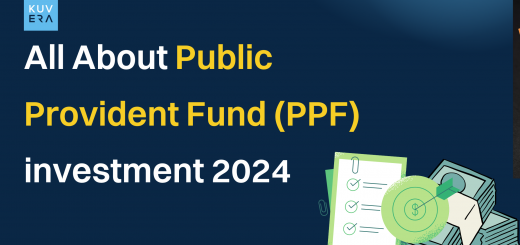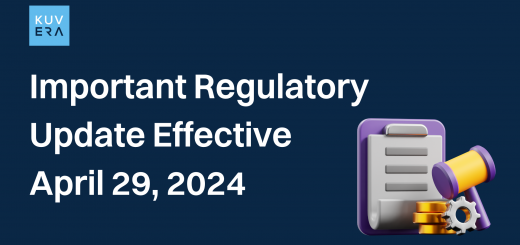Many investors invest in debt mutual funds since the returns offered by debt mutual funds have historically been more consistent than the returns offered by equity mutual funds. However, rising interest rates in the Indian economy at the macro level complicates the whole scenario and adds an additional layer of complexity to your mutual fund investment journey. Debt funds are mutual funds that invest primarily in fixed income earning securities. They are also known as Income Funds or Bond Funds.
Before we explain how debt mutual funds are impacted by changes in interest rates. Let us first understand what debt mutual funds are.
What Are Debt Mutual Funds?
Debt funds are mutual funds that place a substantial portion of the accumulated corpus in debt or fixed-income securities. The primary objective of investing in debt funds is to generate a steady income and grow wealth in a stable manner.
It seeks to reduce risk by selecting low-risk investment instruments. Debt funds are a secure investment option that aims to generate high returns. In order to do this, they invest in various securities according to their credit ratings. The credit rating indicates the creditworthiness of the issuer, i.e., whether they will honor their commitments to pay interest and principal as assured.
A higher credit rating indicates that the issuer is more likely to consistently pay interest and return the principal upon maturity. They are usually considered better options than many traditional investment options.
When a company or government entity requires funds, they “borrow” from investors through the issuance of debt instruments. In exchange, they assure the investor of regular interest. A debt fund is a type of mutual fund that invests in debt instruments such as corporate and government bonds, corporate debt securities, money market instruments, etc.
There are various types of debt funds to suit investors with different risk profiles, investment horizons, and financial objectives. Debt funds invest in mostly all types of debt, including treasury bills, government securities, commercial paper, certificates of deposit, money market instruments, securitized debt, and corporate bonds.
Let’s take the example of a corporate bond. A company issues corporate bonds to finance a wide range of business needs. This includes the purchase of new equipment, expansion into a new market, investments in research and development, the acquisition of other suitable businesses, etc.
This means that investors who purchase corporate bonds are lending money to the company that issued the bond. In exchange, the company promises to pay interest for the duration of the bond. At maturity, the investor receives both the principal and the interest.
Likewise, a government bond is a debt security issued by the government to finance any sort of government expenditure. The government, like companies, assures periodic interest payments for the duration of the bond.
So, debt mutual funds are debt-centric investment vehicles. A debt mutual fund purchases these bonds and distributes the interest income to its investors. Debt funds invest in this manner. If the investors know what they are looking for and which debt funds to invest in, these funds can be a great investment opportunity.
How Does a Debt Fund Work?
Debt funds are regarded as a good investment option because they aim to generate returns that are more stable and low-risk than other options such as fixed deposits. They are in a position to do so because they invest in market instruments, such as those discussed above, that provide a fixed rate of return.
The manager of a debt fund determines which debt instruments will be procured and managed by the fund. This decision is based on the credit risk ratings of the debt instruments. A high credit risk rating indicates that the issuer of the debt instrument has a greater chance of making interest payments on time and the ability to repay the full principal on time.
A higher credit rating indicates a low likelihood of payment default. Different types of debt instruments are assigned the following ratings: AAA, AA, A, BBB, BB, B, C, and D. Debt instruments with a credit rating of AAA are thought to be the safest and least risky, while those with a credit rating of D are thought to be highly likely to default on their financial obligations.
Different Types of Debt Mutual Funds
- Dynamic Funds: Investments in Dynamic Funds are not restricted by security type or maturity profile. The portfolio manager of dynamic bond funds alters the fund’s composition in response to fluctuating interest rates.
- Liquid Funds: Investments in debt securities with a maturity of up to 91 days. These funds are ideal for investors who wish to invest their excess cash for a brief period. A viable alternative to bank savings accounts with the potential for higher after-tax returns.
- Ultra Short-Term Bond Funds: They are low-duration funds, with a portfolio maturity of less than a year. Due to the low lending duration, these funds are slightly riskier than liquid funds, but they are still among the lowest-risk funds in their category.
- Short-Term Income Funds: They are medium-duration funds where portfolio maturity ranges from one year – three years. In a scenario where interest rates are rising, investors with a time horizon of more than one year can benefit from these funds.
- Fixed Maturity Plans (FMPs): Fixed Maturity Plans (FMPs) are closed-end funds that invest in debt securities with maturities that correspond to the scheme’s duration. FMPs typically invest in low-risk, highly-rated debt, which they hold passively until maturity and then redeem and distribute to investors.
- Gilt Funds: Gilt Funds invest in government securities of varying maturities. Funds with a portfolio maturity between three and twenty years and negligible credit risk.
- Monthly Income Plans (MIPs): Typically, medium to long-duration funds have an equity exposure of less than 30 %. It is ideal for investors who seek higher returns than traditional debt instruments but do not wish to increase their equity exposure. The debt-to-equity ratio ensures income stability, while the equity portion provides capital appreciation when stock markets rise.
- Capital Protection Oriented Funds (CPFs): Follow a structure for investments that seek to protect the initial investment from capital erosion. This type of scheme is “oriented towards protection of capital” and “not with guaranteed returns.” The orientation toward capital protection originates from the scheme’s portfolio structure and not from any bank guarantee, insurance coverage, etc. CPFs have a small equity component that enables risk-averse investors to participate in the equity markets without worrying about the erosion of their protected principal. Additionally, credit rating agencies rate CPFs.
Features Of Debt Funds
- Less Risky: Usually, debt funds are not directly affected by fluctuations in the stock market. The interest rate regime and its fluctuations within the economy may have an effect on debt funds. However, interest rate fluctuations are not as extreme as stock market fluctuations. Furthermore, debt funds usually invest in fixed-income securities where the interest rate and maturity value are known. Therefore, debt funds are typically less risky than equity funds.
- Returns: The investment aims to generate stable and secure returns. They invest in fixed-income securities that pay a consistent rate of interest.
- Credit Quality: In contrast to equity mutual funds, the majority of underlying fixed-income securities in debt funds are credit-rated, for instance, the rating agencies assign ratings to corporate bonds, debentures, and commercial papers. Government securities and T-bills are backed by the Indian government. Low-risk debt funds invest in fixed-income securities with the highest AAA rating.
- Taxation: Debt funds are taxed in the year of redemption. If debt fund investments are held for less than three years, investors must pay Short Term Capital Gains (STCG) tax. Long-Term Capital Gains (LTCG) with indexation benefits apply to investments held for more than three years.
Benefits Of Debt Funds
- Stable Income: Debt funds generate returns primarily from interest income and the maturity value of the underlying fixed-income securities. Since both the interest rate and maturity value are fixed, debt funds provide a stable and regular cash flow without the risk of market volatility.
- Safe: Debt funds are a safer investment option for conservative investors. Investors with a lower risk tolerance benefit from the credit quality and lower volatility.
- Portfolio Risk: Since debt funds are less risky than equity funds, a strategic allocation to the top-performing debt funds reduces risk and adds stability to an investment portfolio.
- Range of Investment Options: Debt funds are available along the entire spectrum of maturity and credit risk.
- Diversification: Diversification improves the tenacity of your investment portfolio, investment in debt mutual funds gives you exposure to debt securities.
Debt Funds And Rising Interest Rates
In the past few years, there have been significant rate cuts and the entire focus has been on reviving economic growth. New worries emerged after the pandemic. The market is under pressure due to weak global signals, rising bond yields, persistently high inflation, uncertainty surrounding the Russia-Ukraine conflict, and rate hikes by the US Federal Reserve.
Inflation is the primary concern worldwide and in India. Inflation rates in the world’s leading economies have been high for decades. As a result, major central banks have increased interest rates. The RBI shifted its focus from growth to ensuring inflation remains within the target range in the future, thereby initiating the cycle of rising interest rates.
Inflation rose at the beginning of the year as a result of high crude oil prices, and it continues to inch upwards as a result of rising food prices. This cost-push inflation is anticipated to remain high for a while. Therefore, the action on interest rates may continue to be the same.
When it comes to the potential effects, one of them is evident in lending rates. However, the same is not reflected in deposit rates. A rise in lending rates may result in a rise in the cost of borrowing for companies, which may have an effect on economic growth. Fuel excise reductions, LPG subsidies, and increased food and fertilizer subsidies will reduce government revenues, which may lead to an increase in government borrowing.
What are the benefits to the investor?
The debt market goes through various cycles, just like the equity market. The recent increase in domestic and global bond yields has resulted in a decline in the value of traded bonds and the returns on debt funds.
One of the most prevalent investment strategies for equities is investing strategically based on the economic cycle and sector exposure in order to benefit from volatility and generate a return. If the debt is approached in the same manner based on the interest rate cycle by investing in the appropriate fund within the debt scheme categories, risk-adjusted returns can be improved. A few of the suitable options that investors can follow:
- One of the strategies investors can follow is by investing in short maturity funds in a scenario of rising interest rates. This minimizes the loss caused by a rise in yields and provides the advantage of frequent reinvestment at high returns. These funds invest in short-term paper and as they mature, they reinvest the proceeds in the higher-yielding paper.
- Investors can invest in funds that adhere to accrual strategies (holding paper until maturity and receiving coupon payments) to minimize interest rate risk. Funds that employ a buy-and-hold strategy may be a viable option.
- Even though there is volatility in the market, investors seeking to lock in high yields for a long investment horizon may implement a SIP (Systematic Investment Plan) in long-duration funds to reduce volatility and profit by holding until maturity or until the rate cycle changes again. This may be viewed as the optimal solution for investors who wish to continue investing during all rate hikes and gain benefits in future rate cut phases.
- Investors investing in traditional investments such as guaranteed return deposits, where transmission of rates (rate change by RBI to banks changing rates) has a significant lag. Debt funds may be considered faster in reflecting interest rate changes. Even though the repo rate has increased in the current environment, deposit rates have remained relatively stable and may continue to do so till there is enough liquidity in the market. The debt market reflects the rise in yields in real-time, making it a viable option.
It is a common misconception that investors can only profit from debt mutual funds when interest rates are falling. They can select funds from the various debt fund categories based on their risk profiles and investment objectives to construct a diversified portfolio that can generate wealth in various interest rate environments.
Through Systematic Investment Plans (SIPs), equities have taught investors to think long-term. Long-term investors can apply the same lessons to their debt investments with a combination of buy-and-hold and long-term debt, which gives them a combination of coupon and long-term debt experience, so long as they understand the volatility in debt and have an investment horizon to overcome volatility.
Frequently Asked Questions (FAQs)
-
How to invest in Debt Mutual Funds with Kuvera?
Kuvera is the one-stop solution for all your investments and financial goals. You can diversify your portfolio with Kuvera.
- Download the Kuvera app or visit the official website.
- Create your account on Kuvera by completing the mandatory KYC procedure. Once it is completed, select the ‘Invest’ option on the homepage, after which you can select ‘Debt Mutual Funds‘.
- You can now explore the list and select the category or plan accordingly.
-
Who should invest in a Debt Fund?
Debt funds are ideal for risk-averse investors seeking a regular income. Debt funds are less risky than equity funds because they are less volatile. If you have been saving in traditional fixed income products such as Term Deposits and are looking for steady returns with low volatility, debt mutual funds may be a better choice as they help you achieve your financial goals in a more tax-efficient manner, thereby allowing you to earn higher returns.
Interested in how we think about the markets?
Read more: Zen And The Art Of Investing
Watch/hear on YouTube:
Start investing through a platform that brings goal planning and investing to your fingertips. Visit Kuvera.in to discover Direct Plans and Fixed Deposits and start investing today.
#MutualFundSahiHai #KuveraSabseSahiHai!











